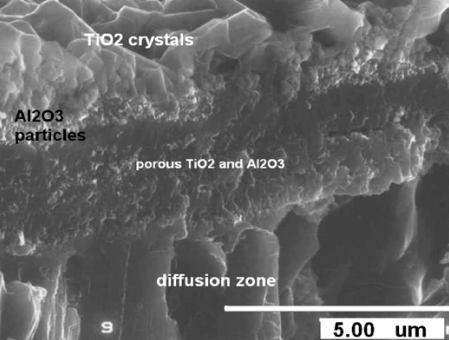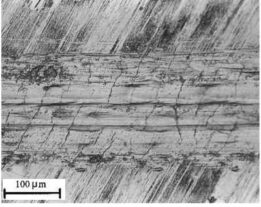Plasma electrolytic nitrocarburizing (PEN/C) was applied to the surface of carbon steel under the boiling condition of saturated urea electrolyte. In addition to the general effect of the bath temperature, different applied voltages and processing times were also considered in this new process. Optical and scanning electron microscopy, X-ray diffraction, microhardness and pin-on-disc wear tests
Low carbon steel was plasma pack aluminized at 973 K (700 C) for 5, 10, and 15 minutes in vacuum of 15 mbar. A paste of aluminum was packed around the samples, and the process was carried out in glow discharge of argon gas in one step without further diffusion processes. The aluminized samples were
In this investigation, Ti–45Al–2Nb–2Mn–1B (at%) titanium aluminide was thermally oxidised at different tempe ratures of 700–950 ◦C and at different times. Most oxidation exposures resulted in the formation of a compound layer consisting of several oxide layers, a TiO2 layer as the outermost layer on top of a layer of Al2O3 particles, a mixed layer of
Lamellar Ti–48Al–2Nb–2Mn (at.%) and Ti–45Al–2Nb–2Mn–1B (at.%) titanium aluminides have been wear tested using a ball-on-disc configuration against a 10-mm-diameter hard steel ball under dry sliding conditions at applied loads of 3.5, 5, 10 and 20 N. The worn surfaces have been characterized using optical microscopy, scanning electron microscopy, energy dispersive X-ray spectroscopy and microhardness measurements.




